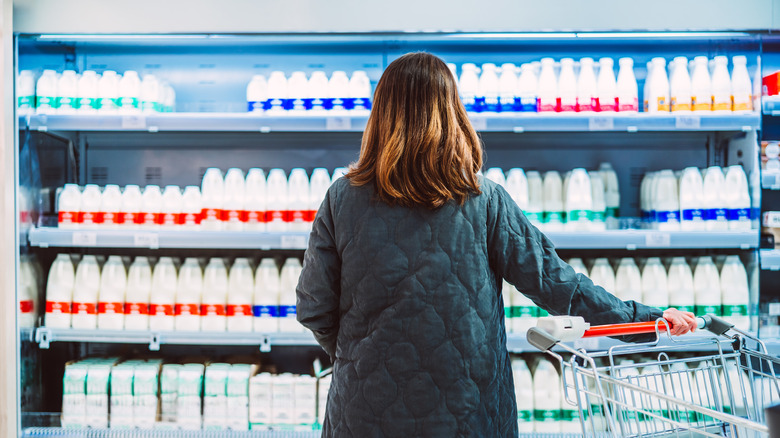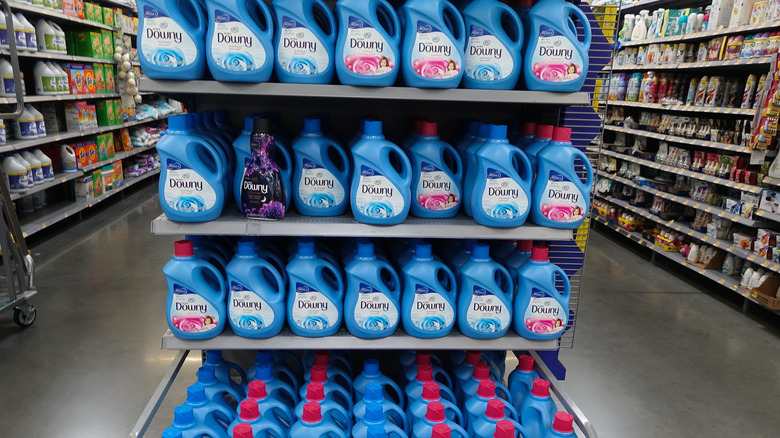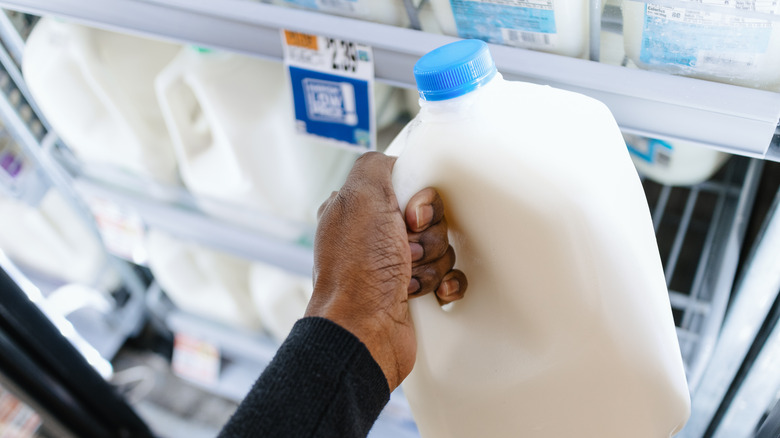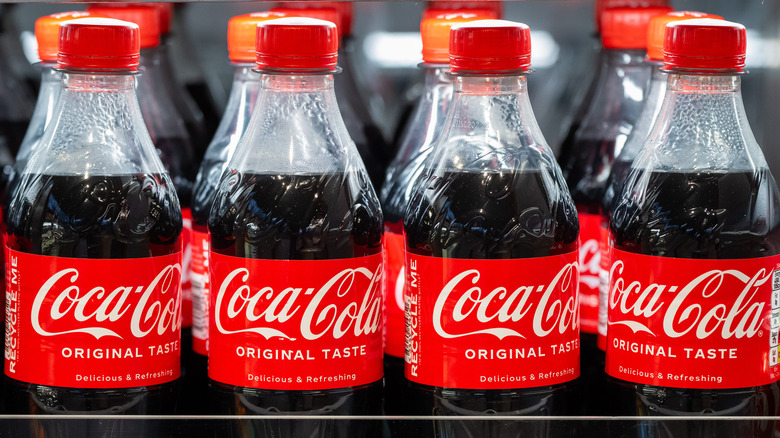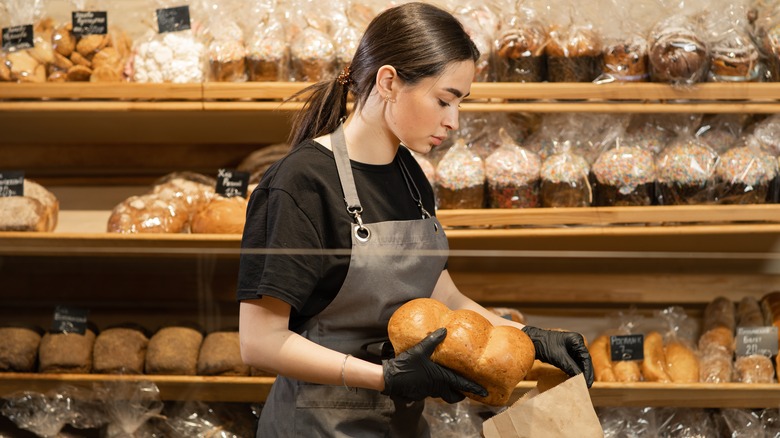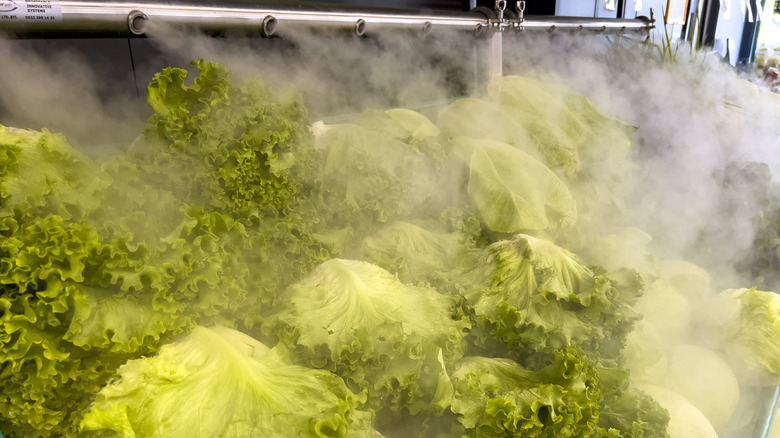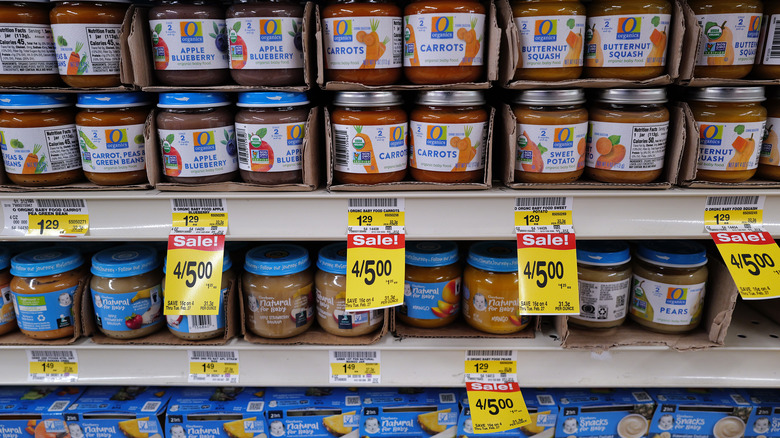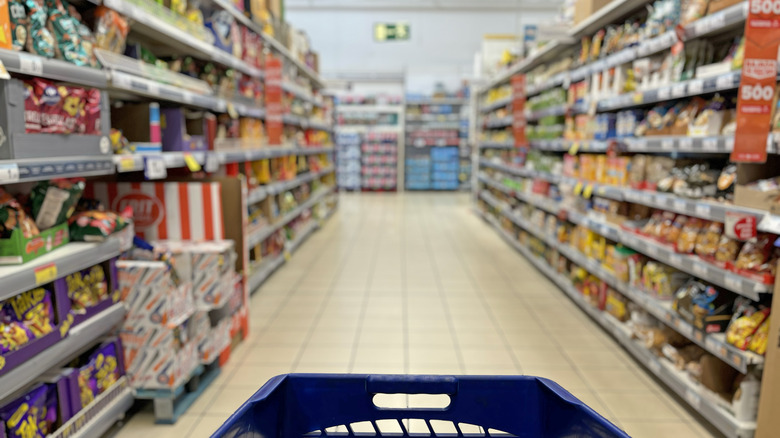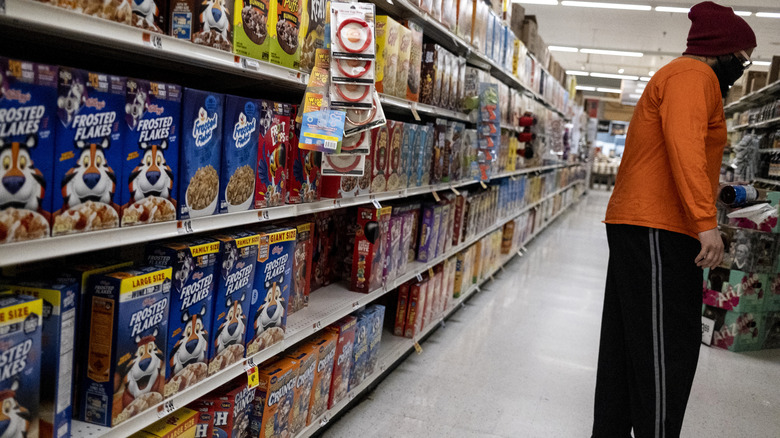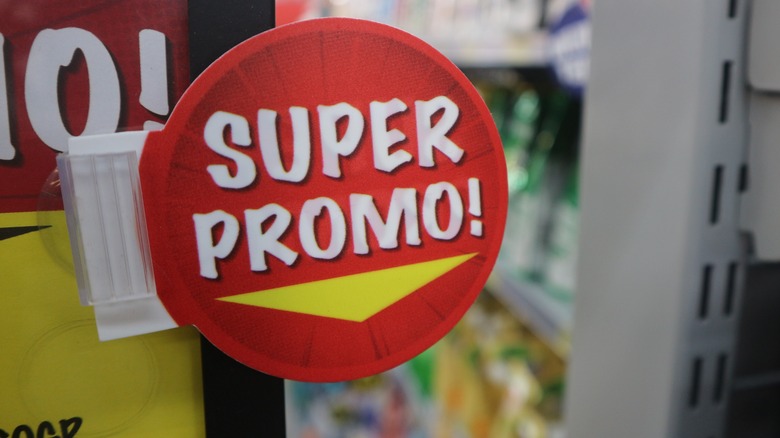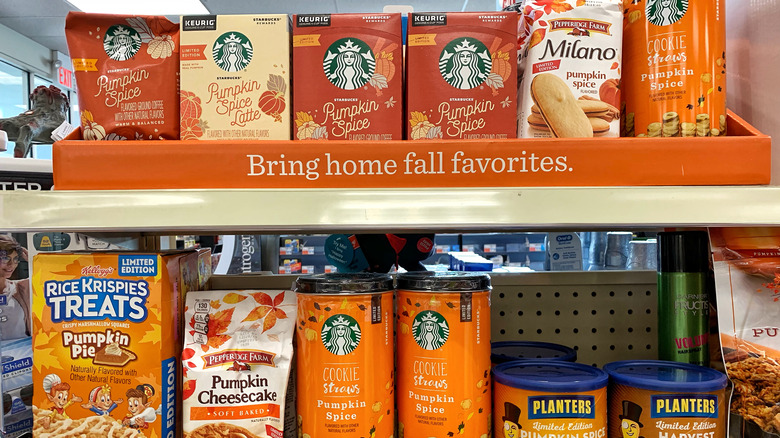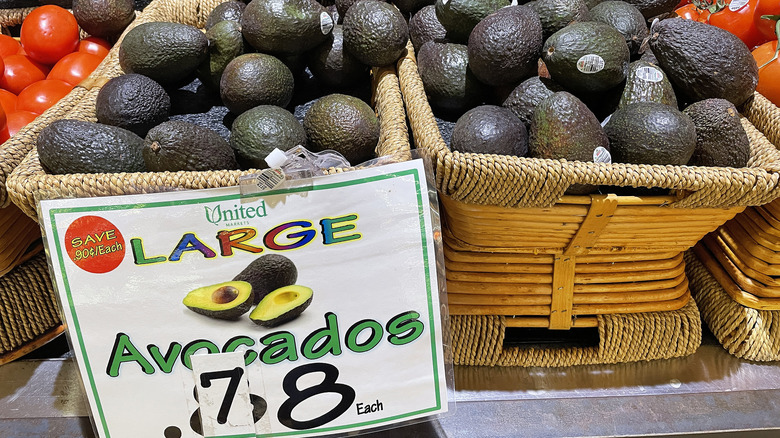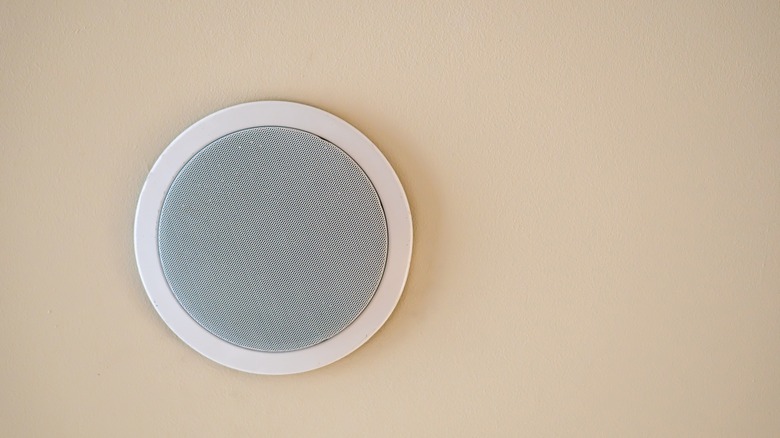Shady Things Grocery Stores Do To Get You To Spend More Money, According To Marketing Experts
We get most of the food we need to live from supermarkets. Brightly lit and abundantly stocked with thousands of foods from all over the world, and packaged in brightly-colored and tantalizing packaging, the grocery store serves as both a gateway and roadblock to sustenance and nutrition. It is a highly competitive industry where profit margins are slim, and grocery stores can get more customers by doing whatever they need to do — and so they are not above embracing a little psychological manipulation of the public. While there are many red flags that are signs of a bad grocery store, even the most trusted grocery stores in America will utilize underhanded mental trickery as a matter of course in order to get more money out of its customers and sustain the business. Chains may be responsible for why groceries are still expensive, and a sophisticated understanding of customers is how they can keep operating as such.
To help us unlock these crafty and manipulative tricks of the mind to separate customers from more of their hard-earned money, we consulted with some of the leading minds on the subject. Consumer and marketing expert Andrea Woroch and Florida International University marketing professor Anthony Miyazaki clued in The Takeout to the kinds of things that Big Grocery does to get even the most steadfastly frugal customers to spend more cash on their shopping trips.
End caps can be deceiving
Supermarkets utilize virtually every space available to display sellable merchandise. Beyond frozen and refrigerated sections, produce bins, and many levels of shelves running down both sides of every aisle, grocery stores offer up items for sale on end caps. These are the spots at end of each row, which shoppers pass by before entering the aisle proper. They usually feature pristinely arranged merchandise, maybe with a price sign to attract customer interest. This kind of presentation indicates or suggests that the end cap stuff is on sale, enticing consumers to buy the product on offer.
But those could also be regular items at a regular price, with the manufacturer paying for the special attention on the highly visible end cap. "End caps typically feature some sort of promotional offers, but they are not always the best deal you can get for the type of item being featured," Andrea Woroch laid out to The Takeout. "This is usually just a way for a store and brand to push their products out in front of customers."
What customers really want is at the back of the store
The most universal of purchases made at supermarkets are the building blocks of food, or the necessities required for cooking or to ensure a smooth morning routine — items like eggs and milk. Those are also highly perishable, so supermarkets keep them under constantly cold conditions in mass refrigeration units which also happen to be placed in the very back of the store, or in a corner as far away from the entry doors as possible. Supermarket personnel know that customers might just be coming in to grab a gallon of milk, quart of half and half, or a dozen eggs, and if they had a direct path, they would only buy those few, relatively inexpensive things that they always intended to buy.
"By placing the daily essentials you are most likely to go to the store for at the back of the store, it forces you to walk past other potential purchases," Andrea Woroch told The Takeout. "Grocery stores make a lot of money on your impulse purchases and they will do whatever they can to influence you to buy food you weren't planning to purchase. The store layout plays a big role in your purchase decisions!"
Impulse buys are at the front of the store
Anyone can plan a grocery shopping trip with utmost precision, and dutifully check off the items on a prepared list as they fill their cart with only previously thought out purchases. It is this attitude and approach that supermarkets do their best to destroy. They want shoppers to buy well more than what they had planned. This is a phenomenon called impulse buying, and even if consumers made it all the way to the register with no extraneous or spontaneous purchases, the store will give it one last shot to separate them from their money. Sugary treats like candy, gum, and individually-sized sodas displayed in reach-in coolers are hard to pass up. The sodas may even cost more per ounce than the unrefrigerated multi-packs or 2-liter bottles on the shelves.
And if a customer is standing in line waiting to pay for a while, the more likely they are to fall for an impulse buy — it's in the store's best interest to keep everyone waiting. "The longer the line, the more time you have to browse and grab items you weren't planning to purchase," Andrea Woroch told The Takeout.
The store smells great, but that's a trap
An in-house bakery is a very common benefit of a contemporary supermarket. Whether the bowels of the store includes a real, full-service bakery where breads, cookies, cakes, and pastries are made from scratch each day, or a glorified reheating center where dough or par-baked goods sent by suppliers are finished and packaged, the promise of hot, new, carbohydrates and sweet treats proves enticing to customers.
But all styles of bakeries serve another, slightly shadier purpose. The objectively pleasant smell of cookies, bread, or cakes in an oven is disarming to customers, and stores strategically place their odor-generating bakeries to get the most effect. "Sweet smelling bakery section conveniently located by the doors when you walk in," Andrea Woroch called out to The Takeout. "This will get you in the mood to buy cookies and also makes you hungrier so you buy more."
The misters keep veggies fresh and enticing
A trip to the supermarket may be full of sensory experiences, what with all the visually pleasing packages and the smell of fresh bread wafting out of the bakery. The whole thing feels pretty detached from anything in the natural world, however, except for the misters in the produce department. Apparently attached to timers, every so often and perhaps with a sound effect of rumbling thunder as a warning sign to get out of the way for veggie-buying customers who don't want to get wet, misters emerge from panels atop the produce to deliver a fine mist of water (and no, they don't clean the veggies, you still have to wash your produce before peeling it).
This regular miniature water show creates a link in shoppers brain between produce and freshness. Fruits and vegetables perceived as crisp and at their physical peak are more attractive to eat and buy, and a coat of water makes them all appear as freshly-picked as possible. That makes customers want to buy more produce, of course, particularly if it's labeled "fresh." "Grocery stores know people are driven by fresh ingredients and just by using the word, it creates an association that makes people want to shop and buy ingredients from that store," Andrea Woroch told The Takeout. "The water bubbles on the produce makes it look fresher and more enticing." It also garners the store a few more cents per customer. Water weighs down produce even a little, making the priced-by-pound items more expensive.
Special pricing tricks consumers
Exploiting perhaps the average person's inability to perform mathematical functions in their heads and spontaneously, grocery stores will institute tricky special pricing measures designed to obscure the actual cost of items. A store may offer a sale on some products but only if they're purchased in larger quantities. In a practice that Professor Anthony Miyazaki calls "discounted multiple pricing," the per-item cost falls if the customer buys more — say a yogurt cup costs $1.29 on its own, but the store offers three for $3.
There's also "static multiple unit pricing," where the cost is displayed with the language of quantity up front, such as 10 yogurt cups on sale for $10. While both tactics encourage customers to buy more of something than they initially intended, the static multiple unit pricing model is particularly nefarious. "When retailers use static multiple-unit pricing, consumers tend to purchase more of the item, sometimes thinking that they need to purchase the stated quantity to get the deal," Miyazaki explained to The Takeout. "Shoppers perceive a larger dollar savings as a better value and will spend more to get what they think is the better deal. This is an easy way to waste money though," Andrea Woroch explained.
The ever-changing layout makes people buy more things
Some supermarket tricks are sneakier and more insidious than others — and it's pretty obvious what a store is up to when it randomly and frequently rearranges its inventory. All of a sudden, shopper's routines are upended and they're made to walk all over the store in search of the frequently purchased items they could once so easily and swiftly locate. This is all done on purpose of course, to get regular shoppers out of their comfort zones and to look at new-to-them products.
"By changing where products are in the store or changing the layout of the shelving and aisles, retailers force you to start searching for what you want rather than going directly to the locations you're familiar with," Professor Anthony Miyazaki told The Takeout. "During this searching process, you're bound to encounter products and brands you've never paid attention to previously, which increases the likelihood that you'll try something new."
With similar psychological methodology in mind, stores may also create a flow of traffic. "Another store layout tactic is to get customers to enter the store from one location and exit from another, all while browsing in a fashion that encourages more purchasing," Miyazaki says. "You have to walk through a maze of aisles to not only get to what you want, but to pay and exit the store."
Shelf placement is deliberate and it matters
The average grocery store is separated into aisles where shelves stretch from the floor, to far above the average human height. And within that framework, items are placed on the shelves according to not just product category but in order to maximize sales. Where products come to reside is based upon how much the store, and manufacturers, want you to buy them. It's all about resting within the eye line of the target audience, and getting them to pay attention and buy that product they didn't necessarily intend to purchase when they came into the store.
"It's no coincidence that breakfast cereals are arranged on grocery shelves such that sweet cereals desired by little kids are down at their eye levels while those appealing to adults are up higher," Professor Anthony Miyazaki explained to The Takeout. "Also, staple brands that you might buy regardless of whether you see them may be at the very bottom because you'll seek them out." That goes for standard items where a name brand isn't as important to the store or consumer. "This is why flour and sugar are almost always on the lowest shelf. You don't buy them as an impulse; you buy them as a planned purchase."
That scarce product isn't really that scarce
Sales, markdowns, and discounts are a mundane part of the grocery store experience — customers understand that at some times, the price on certain products go down, and that bargain won't last more than a couple of days or a few weeks. A store may resort to another plan to get an item to move out quickly — by not hurrying to restock an item, it makes it appear as if an item is in low quantity. This subtly urges customers to "act now" to get the product because "supplies are limited."
All this scarcity is carefully manufactured. "Limited time offers often get consumers to act quickly out of a fear of missing out because they're concerned that if they don't buy now, they won't be able to later on," Professor Anthony Miyazaki told The Takeout. "Some retailers, such as Costco, make this a part of their buying culture where they purposely run out of items, which trains their customer base to buy a deal when they see it because they know that deal may be gone the next time they enter the store."
Product grouping encourages extra sales
At first glance, it seems like a courtesy, an act on behalf of the grocery store that has the consumers' shopping habits and needs so very much in mind. It seems like they're saving customers time, and even money, by placing associated items from different sections of the store together, based on how they assume they'll most likely be used. For example, a grocery store during summer s'mores season might place six-packs of chocolate bars on a shelf next to boxes of graham crackers and bags of marshmallows, or near Thanksgiving, they'll offer ready-made pie crusts, pumpkin pie spice, and canned pumpkin purée all in the same vicinity.
It's more than one-stop shopping, however — it's psychological enticement. "Ever walk into a grocery store and see a display of ingredients to make guacamole and all of a sudden you have a desire to eat it?" posits Andrea Woroch. "This is a grocery store trick that influences your shopping decisions, leading to impulse purchases, and it could lead to wasteful spending."
Stores will lose money to make money
It seems counter-intuitive, but a big supermarket chain may purposely sell a popular or essential item at a price so low, and unbeatable by the competition, that they actually don't make any profit on a per-unit basis. Because they're taking a loss and leading customers into the store to make more purchases, this is called a "loss leader." For example, the shop may set the price of a gallon of milk at a price of $2, less than wholesale cost. But once through the doors, the customer may be tempted to make more purchases. This explains why Costco sells rotisserie chickens for $4.99.
It also encourages repeat business — grocery stores fight for customers' loyalty, and losing a few bucks on a product is worth the investment. "Loss leaders are cheap grocery items people need on a daily basis like eggs and milk that the stores are willing to lose a profit on in order to get you into their store," Andrea Woroch told The Takeout. "Retailers also know because these are the goods you buy most regularly, you will start associating the lower priced ingredients with the overall store and shop there more often regardless of whether they truly beat other grocery stores out for lower prices."
The piped-in music encourages purchasing
When one enters a major supermarket in the 21st century, they're likely to hear some music coming out of some speakers tucked up far away near the ceiling. As unobtrusive and inoffensive as possible, and never played too loud, the selections heard will likely be gentle instrumental tunes or familiar, mid-tempo hits from the last few decades. This kind of thing is colloquially referred to as "elevator music," because that's where the public playback of soft, bland music was first attempted, in the 1920s. And music is still played in most grocery stores today, operating off of research that shows music can positively affect shoppers' moods.
That means music can be a powerful tool for store operators. The right selections can relax agitated customers and put them in a good mood. And happy customers are far more likely to hang around a little while and spend more money.
